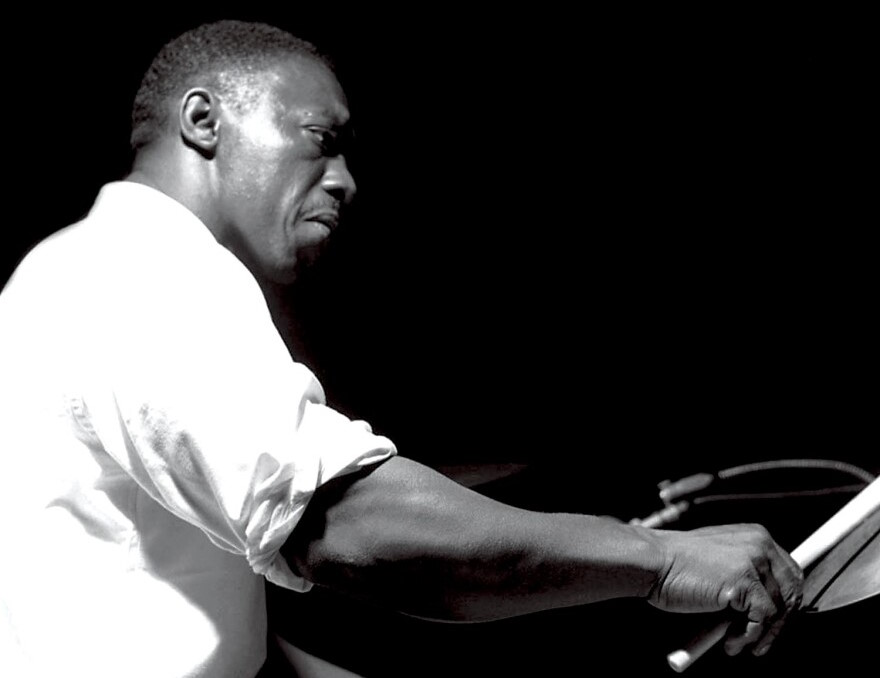An exchange on the evolution of the bass drum in jazz, from Max Roach, circa 1981, from his Modern Drummer interview with Scott K. Fish.
SF: Back in the ’50s and ’60s jazz drummers were primarily using the smaller size drums: 18″ bass, 12″ mounted tom and 14″ floor tom. I’ve heard that one of the main reasons drummers used that size drum was because they were easier to transport than larger drums.
MR: Exactly. It made it easier to get from town to town. Pack up your gear, put it in your car, and off you go. That was one of the main reasons I think.
Plus, the bass drum had begun to become less and less an integral part of the whole musical set-up. It’s different now. The bass drum, at that time, would stamp out what was happening with the acoustic bass. Even the pianists would leave that part. They would voice their chords so the bottom of the piano would be in thirds and sevenths instead of tonics and fifths. They left that part for the acoustic bass. So, your bass drum would only be used for accents and supports.
So the small drum was great, plus, you didn’t have all the electronics around you, so you didn’t need that power there. There were many reasons for it. But, today you do need that power with the electronic scene.
The italics are mine, and it’s maybe a revealing part of the comment. Max typically played the bass drum in the way we now call feathering, but he doesn’t bring it up as a role of the bass drum in modern jazz. It’s important to note that at the time of the interview, larger bass drums were generally in favor— usually 20-22″. And at that time bebop was not the only thing happening in jazz— many big players of the 60s had moved in a more fusion direction.
But imagine Mel Lewis addressing this topic— well, we don’t have to. He’s rather strident on it. Art Blakey said something similar in his ’80s MD interview:
Like playing the bass drum: A lot of drummers today have no bottom. They talk about punctuating, but they don’t keep that feeling in there, and that bass drum is the basis of the whole thing. And if you let that go it sounds like s*t to me.
I don’t know what Max would say if he was asked specifically about it— he absolutely might agree with Lewis and Blakey. Maybe somebody reading has talked to him or studied with him, or been to a clinic. But feathering the bass drum in a bop setting has become such a dogmatic thing, especially with jazz hobbyists on the internet, and I thought it was an interesting omission.
I originally wrote about this in 2012, and my thinking has changed a little bit— maybe it’s time to revisit that.


